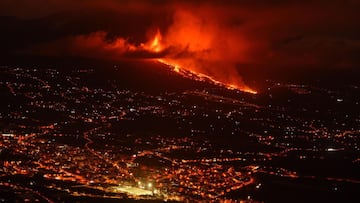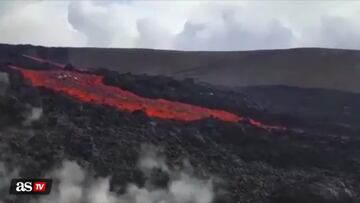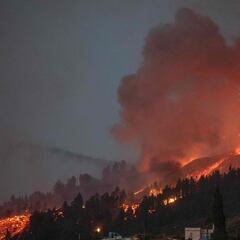La Palma volcano: what happens when the lava reaches the sea?
The world has been watching in awe as the lava continues to flow from Sunday's volcanic eruption on the Spanish Canary Island as it heads seawards.

The lava that is flowing from the erupting volcano of La Palma continues to advance towards the coast at a speed of about 700 metres per hour and experts have forecast that it will reach the sea at about 8 pm local time on Monday (3 pm ET). But many are asking: what happens then?
**Follow all the latest developments and images of the volcano**
La Palma: when the lava meets the sea
The scientific bodies that monitor the behaviour of the volcano have been specific about the place where the lava flow is expected to enter the sea, which will be on the coast of Tazacorte, possibly in Playa Nueva, in Los Guirres.
Once the lava reaches the water there will be a thermal shock caused by the huge temperature difference between the two materials. It is, after all, lava at around 1,100 degrees Celsius, which is pushing 2,000 degrees Fahrenheit, mixing with the coastal water of 23°C (73°F). This will see a rapid cooling of the hot fluid, with a number of other consequences.

Acidic clouds and explosions
This mix will result in the appearance of large acidic clouds and gases that will eventually settle and become part of the surface. This acid rain that falls can cause skin and eye irritations, as well as respiratory problems, so experts recommend that people nearby do not to leave their homes unless absolutely necessary. Breathing in the fumes can be fatal. Shipping vessels have also been advised to stay well clear of the area considered at risk.
Related stories
"There will be explosions,” said José Mangas, professor of Geology at the University of Las Palmas. “It's like mixing boiling oil with water.
“Acid rain can be generated, causing throat and nose irritations to the public.”

